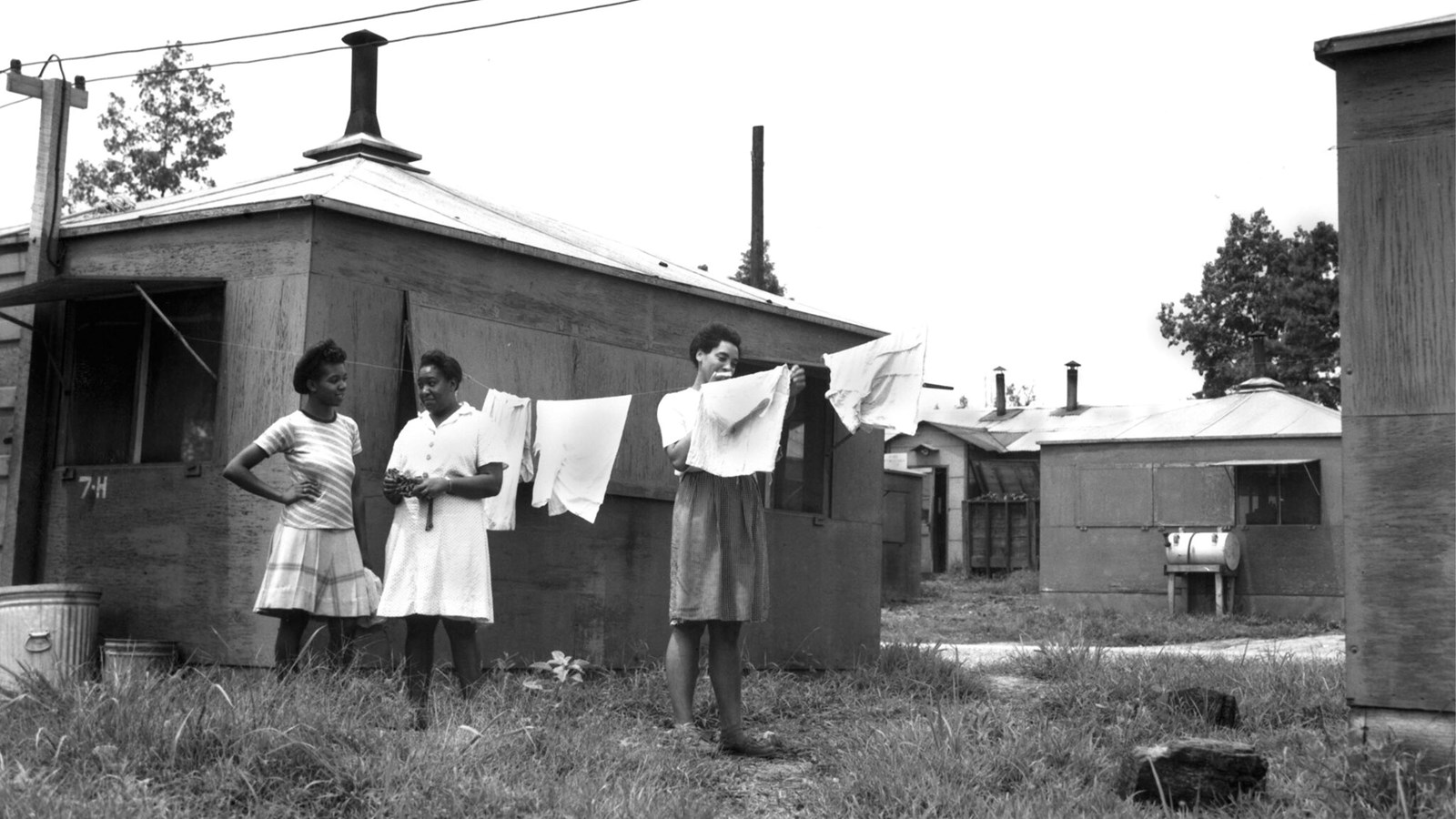Last updated: August 20, 2024
Place
African American Hutments

US DEPARTMENT OF ENERGY/ED WESTCOTT
Imagine being a United States government employee working on one of the most revolutionary wartime undertakings in history. Your contributions, vital to the war effort, helped to drastically change the world. Yet, you were forced to live in dilapidated housing and were not allowed to access the same goods, services, and entertainment opportunities as many of your co-workers. For many African American Manhattan Project workers, this disparity was unfortunately all too common.
A “colored hutment area” was located on this site. Hutments were the lowest form of permanent housing for workers and only housed a few White men but mostly Black men and Black women. Hutments were 16 X16 foot (4.8 meters) structures made of plywood with screenless windows with shutters and a central oil stove. Residents experienced sweltering summers and freezing winters in these hutments. Four to six residents shared each hutment. A communal bathhouse served 12 hutments each. The women’s hutment area was surrounded by roughhewn fence made of scrap lumber. The “women’s pen”, as it was called, had a strict 10:00 pm curfew and no men were allowed.
As World War II was ending, Manhattan Project contractors constructed several “family” hutments in the African American hutment area. They consisted of two hutments connected by a small shed. Located near the single hutment area, the family hutments had no electricity or running water. These were distributed on a first come-first serve basis and were the only African American family housing option during the war. When the war ended and the pressure for housing was lessened, White workers were moved out of the hutments, but the African American hutments were used for several years after World War II.
Continue Your Journey
The Scarboro community was developed as a direct result of backlash brought on by the sub-standard hutment conditions after World War II. Today, nothing remains of the site where the majority of African American hutments once stood. As with many historical locations throughout the United States, the original location of the hutments is now a modern commercial development.
